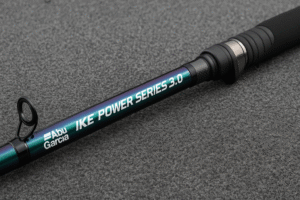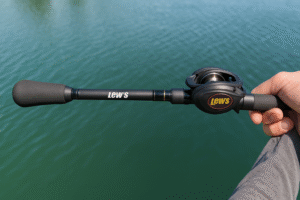Swimbaits Explained: What Is a Swimbait?
Have you ever wondered why some fishing lures look exactly like real fish? That’s where swimbaits come in! These baits are special fishing lures designed to mimic the movement of live baitfish, making them irresistible to big bass and other predators. Anglers love them because they look and move just like the real thing, increasing the chances of a strike. In this article, we’ll dive into what swimbaits are, the different types, how to use them, and why they’re so effective. Whether you’re a beginner or an experienced angler, learning about these baits can help you catch more fish!
What Is a Swimbait?
A swimbait is a type of fishing lure designed to look and move like a real fish. Unlike simple plastic worms or crankbaits, these baits have a realistic swimming motion that tricks predatory fish, like bass, into thinking they are chasing live prey. These lures come in different shapes, sizes, and materials, each with a unique way of mimicking real baitfish.
Swimbaits are incredibly popular among bass anglers because they closely resemble the natural food sources of large fish. They often feature lifelike colors, patterns, and even 3D eyes to make them as realistic as possible. Some swimbaits have jointed bodies, which allow them to move fluidly in the water, while others have paddle tails that create vibrations to attract fish.
The main purpose of a swimbait is to trigger a fish’s instinct to chase and strike. Predatory fish, like largemouth bass, rely on movement and visual cues to hunt. When they see a swimbait gliding through the water, they mistake it for an easy meal and go in for the bite. Swimbaits work best in clear water where fish rely more on sight to find food.
Anglers use swimbaits in many fishing situations, from shallow waters near the shore to deep lakes where big bass hide. These lures are effective for catching trophy-sized fish, making them a go-to choice for serious anglers.
Types of Swimbaits
Swimbaits come in many shapes and sizes, each designed to imitate real baitfish and attract big predators like bass, pike, and trout. Choosing the right swimbait depends on where you’re fishing, what fish you’re targeting, and how you want the lure to move in the water. Here’s a breakdown of the most common types of baits and when to use them.
1. Soft Swimbaits
Soft swimbaits are made of flexible plastic, giving them a natural, lifelike movement in the water. These lures are often designed with a paddle tail that moves back and forth as they glide through the water. Some soft baits come pre-rigged with hooks, while others require separate rigging with weighted hooks or jig heads.
Soft swimbaits work best when fished slowly, allowing their natural action to trigger bites. They are great for fishing in shallow waters, grassy areas, or near submerged structures where fish like to hide. Since they feel soft, fish often hold onto them longer, giving anglers more time to set the hook.
2. Hard Swimbaits
Hard swimbaits are made of durable materials like plastic or wood and are usually segmented to create a realistic swimming motion. Unlike soft swimbaits, these lures don’t bend, but their jointed design helps them move naturally in the water. Some hard baits float on the surface, while others sink or suspend at certain depths.
These lures are perfect for covering large areas of water because they can be retrieved faster without losing their natural action. Hard swimbaits are ideal for open water fishing, deep lakes, and clear water conditions where fish rely more on sight to hunt.
3. Paddle Tail Swimbaits
Paddle tail swimbaits are a type of soft bait, but their design makes them unique. They feature a rounded tail that creates strong vibrations as they swim, mimicking the movement of baitfish. These vibrations attract fish from a distance, making them effective even in murky or stained water.
Paddle tail swimbaits can be rigged in different ways, such as on a jig head, weighted hook, or even a swimbait-specific rig. They work well in both shallow and deep waters, making them a versatile choice for anglers looking to catch a variety of fish species.
4. Line-Through Swimbaits
Line-through swimbaits are designed to prevent fish from shaking off the hook during a fight. Instead of the hook being attached directly to the body of the lure, the fishing line runs through the bait and connects to a hook below. This allows the lure to slide up the line when a fish is hooked, reducing the chances of the fish throwing the bait.
These baits are commonly used for targeting trophy-sized fish, especially in deeper waters or areas where fish are known to be aggressive. They are best for experienced anglers looking to land big bass, musky, or pike.
Best Swimbaits for Every Situation
-
For shallow water & grass-covered areas: Soft or paddle tail swimbaits work best because they move naturally and can be rigged weedless.
-
For deep water fishing: Hard swimbaits and line-through swimbaits are great for reaching fish that stay near the bottom.
-
For murky water: Paddle tail swimbaits are the top choice because their vibrations help fish locate them.
-
For clear water and open spaces: Hard swimbaits mimic real fish well and work best when fish rely on sight to hunt.
-
For big trophy fish: Line-through baits prevent fish from shaking off the hook and are ideal for landing giants.
Why Use Swimbaits for Fishing?
1. Realistic Swimming
One of the biggest advantages of using swimbaits is their lifelike movement in the water. Unlike other lures that rely on bright colors or flashy designs, swimbaits mimic the natural swimming motion of real baitfish.
Many swimbaits have paddle tails, jointed bodies, or segmented parts that create a natural side-to-side wobble. This movement triggers a predator’s instinct to chase and strike.
For example, if a bass sees a swimbait slowly gliding through the water, it will often mistake it for an easy meal. This makes swimbaits highly effective, especially in clear water where fish rely on sight to hunt.
2. Effective for Catching Larger Fish
If you want to catch trophy-sized fish, swimbaits are a great choice. Big fish often ignore smaller lures because they prefer to conserve energy and go after larger, more rewarding prey. Swimbaits imitate the size and shape of actual baitfish, making them perfect for catching monster bass, pike, and muskie.
Many professional anglers use large swimbaits to target record-breaking fish. Since these lures look and move naturally, they often fool even the most cautious predators. If you’re tired of catching small fish and want to land something bigger, using a swimbait can greatly improve your chances.
3. Versatility in Different Fishing Conditions
Another reason swimbaits are so effective is their versatility. They work in many different environments, including:
Deep Water: Heavy swimbaits can sink deep, making them great for targeting fish that stay near the bottom.
Shallow Water: Lighter or floating swimbaits work well in shallower areas and near the surface.
Weedy or Rocky Areas: Some swimbaits are weedless, meaning they can move through vegetation or rocky bottoms without getting snagged.
Clear Water vs. Murky Water: In clear water, realistic-looking swimbaits are deadly because fish rely on vision. In murky water, swimbaits with strong vibrations and color contrasts can still attract bites.
Swimbaits also come in soft and hard varieties, giving anglers even more options depending on the fishing situation. Soft swimbaits are flexible and create a natural motion, while hard baits are durable and work well in open water.
Swimbaits are one of the best fishing lures for catching big fish because they look and move just like real baitfish. Whether you choose soft, hard, paddle tail, or line-through baits, these lures can help you land more fish in different water conditions. Their realistic action triggers strikes from predatory fish, making them a must-have for any angler’s tackle box.
If you haven’t tried swimbaits yet, now is the perfect time! Experiment with different sizes and techniques to see what works best in your fishing spot. With the right bait, you might just catch your next trophy fish!





